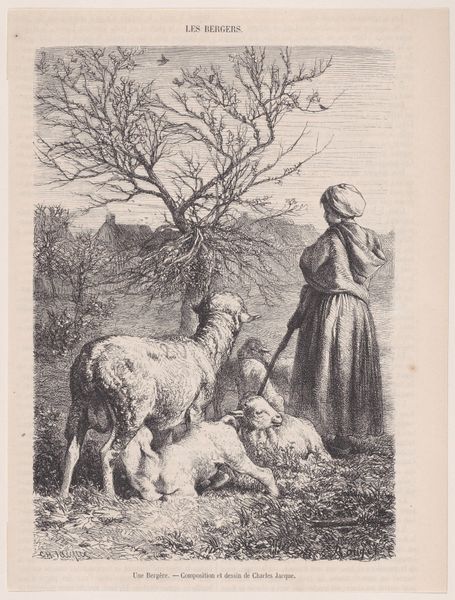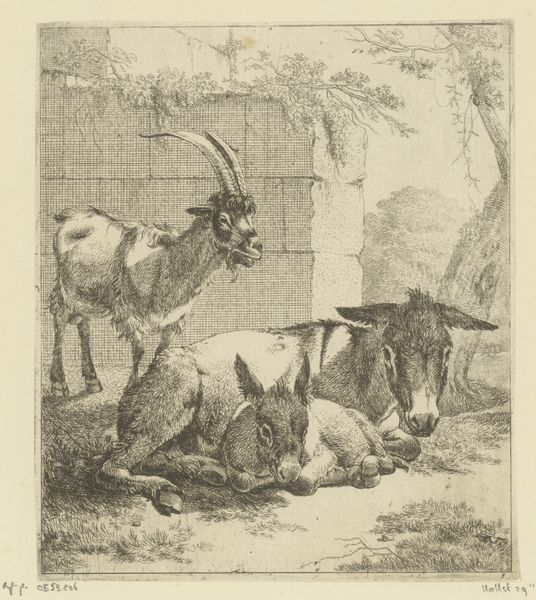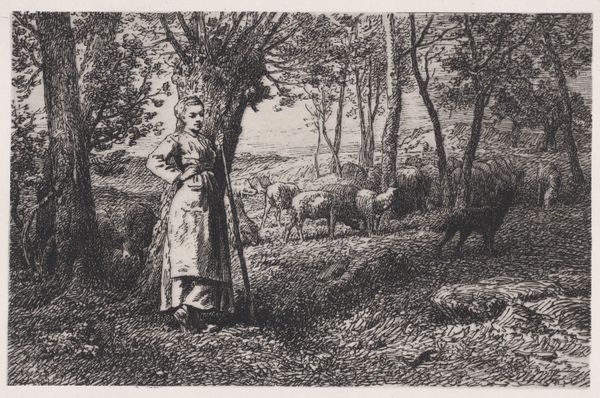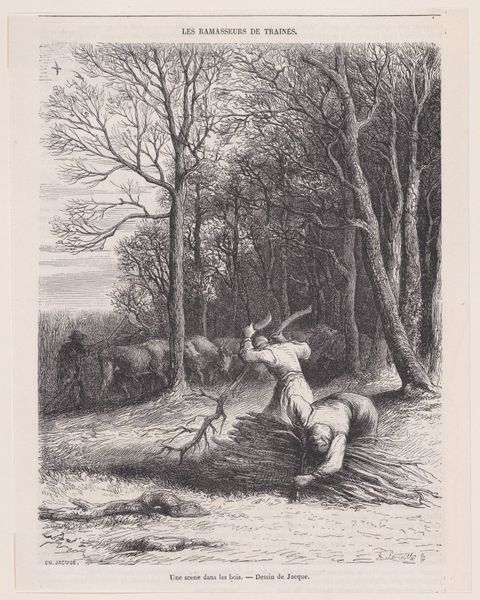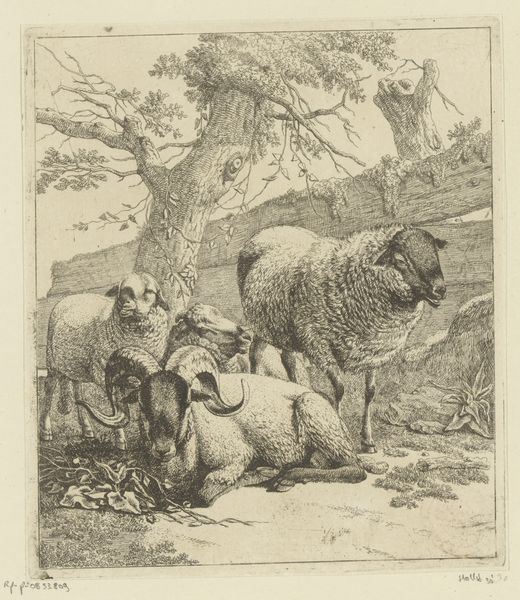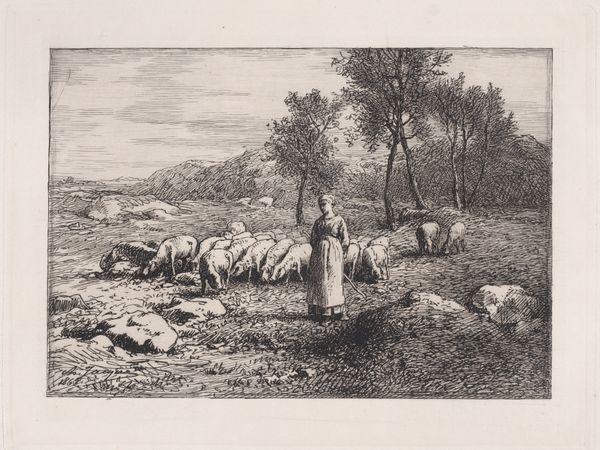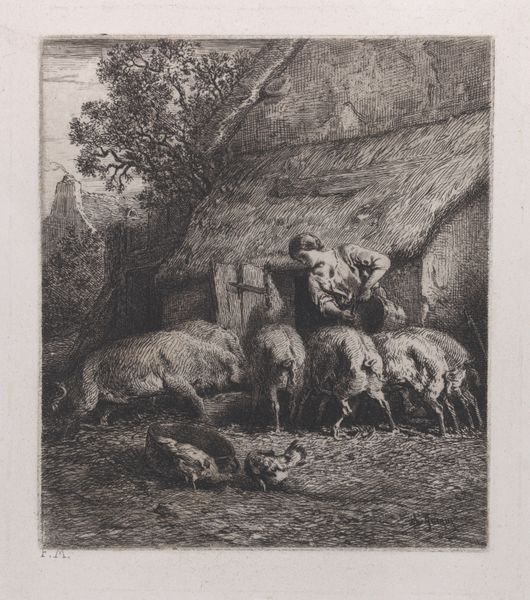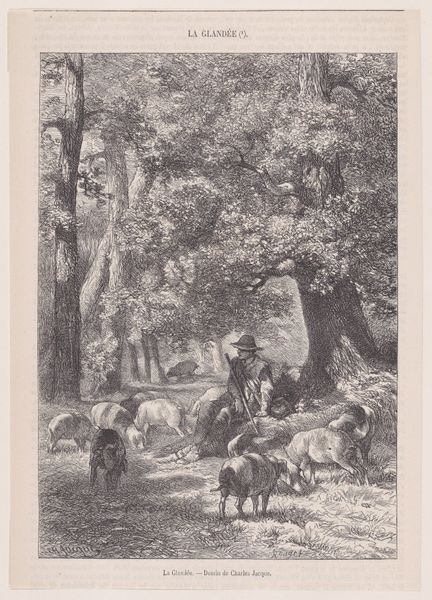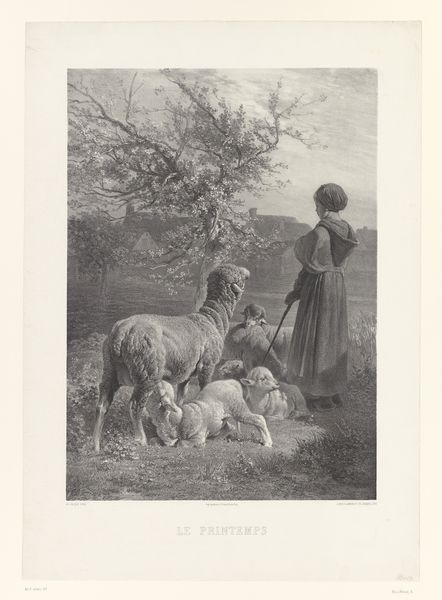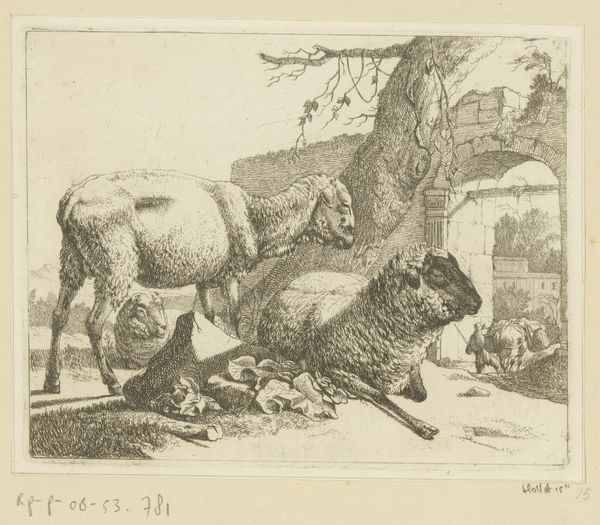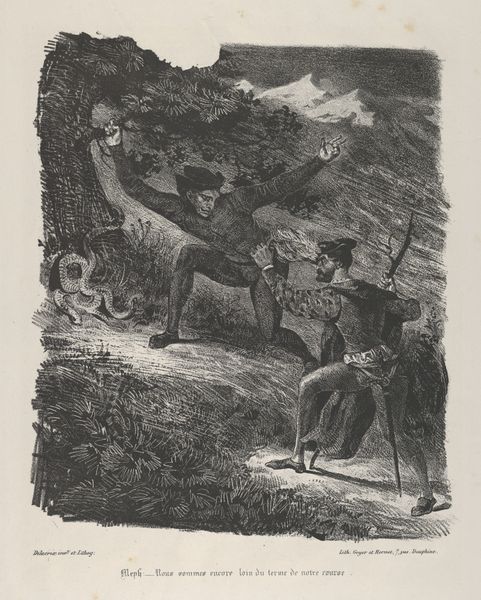
The Shepherd, from "Le Magasin Pittoresque" 1848 - 1864
0:00
0:00
Dimensions: Sheet (Trimmed): 9 1/16 × 6 15/16 in. (23 × 17.6 cm) Image: 8 1/8 × 5 7/8 in. (20.6 × 15 cm)
Copyright: Public Domain
Curator: This is “The Shepherd, from Le Magasin Pittoresque,” an etching, drawing, and woodcut print by Charles Jacque, dating between 1848 and 1864. It's currently held at the Metropolitan Museum of Art. Editor: Immediately, I am struck by the heavy atmosphere. There's a palpable sense of stillness, and yet the tight crosshatching and dramatic contrast create a certain anxiety. It feels deeply Romantic in that way. Curator: The landscape is indeed integral. Notice how Jacque meticulously layers line and tone to establish spatial depth and a complex interplay of light and shadow, directing the viewer’s eye into the scene. Editor: Absolutely, and this constructed landscape performs a particular ideological work. Consider the historical context: the rapid urbanization occurring during this period. Pastoral imagery often romanticized rural life to contrast against growing capitalist societies. Curator: I agree there’s a clear romanticization at play. Focus on the details of execution; the delicate textures of the sheep's wool juxtaposed with the rough bark of the trees demonstrate Jacque's technical skill with the etching needle. Editor: The presence of both domesticated sheep dogs highlights social control over animals and, by extension, rural populations. It suggests not merely a celebration of bucolic life, but also the power structures inherent within it. Who has access to this “nature”? Curator: Fascinating point! The interplay of vertical tree trunks against the horizontal plane creates a visually dynamic framework, too. How might we see these formal arrangements working outside historical context? Editor: Viewing outside its historical and socio-economic contexts renders it devoid of crucial interpretations. Can we ignore who is systematically barred from these romanticized pastoral scenes and from such idyllic leisure? I can’t separate the form from that content. Curator: An interesting position to take given Jacque's own complex relationship with the pastoral landscape. But perhaps that duality itself allows for greater consideration about life, leisure, and power structures today. Editor: Indeed. These dialogues offer a crucial means of interrogating those persistent, yet fraught, socio-political binaries that persist in our lives and the world around us.
Comments
No comments
Be the first to comment and join the conversation on the ultimate creative platform.
